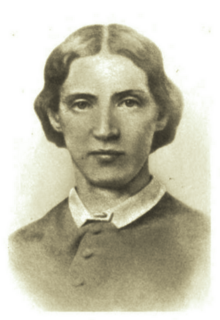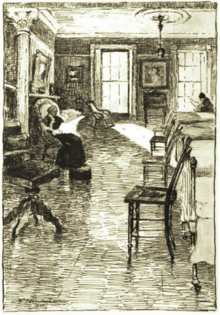
William Ellery Channing was the foremost Unitarian preacher in the United States in the early nineteenth century and, along with Andrews Norton (1786–1853), one of Unitarianism's leading theologians. Channing was known for his articulate and impassioned sermons and public speeches, and as a prominent thinker in the liberal theology of the day. His religion and thought were among the chief influences on the New England Transcendentalists although he never countenanced their views, which he saw as extreme. His espousal of the developing philosophy and theology of Unitarianism was displayed especially in his "Baltimore Sermon" of May 5, 1819, given at the ordination of the theologian and educator Jared Sparks (1789–1866) as the first minister of the newly organized First Independent Church of Baltimore.

Rose Hawthorne Lathrop, OP, also known as Mother Mary Alphonsa, was an American Dominican, writer, social worker, and foundress of the Dominican Sisters of Hawthorne.

Harriet Elizabeth Prescott Spofford was an American writer of novels, poems and detective stories. One of the United States's most widely-published authors, her career spanned more than six decades and included many literary genres, such as short stories, poems, novels, literary criticism, biographies, and memoirs. She also wrote articles on household decorative art and travel as well as children's literature.

Harriet Mann Miller was an American author, naturalist, and ornithologist. She was one of the first three women raised to elective membership in the American Ornithologists' Union. Miller wrote stories for leading magazines. At the start of her career, her articles appeared under the pen name "Olive Thorne" while after marriage, she used the signature of "Olive Thorne Miller". Her books include: Little Folks in Feathers and Fur (1879), Queer Pets at Marcy’s (1880), Little People of Asia (1882), Birds’ Ways (1885), In Nesting Time (1888), and also a serial story entitled, "Nimpo’s Troubles", published in the St. Nicholas Magazine, in 1874.
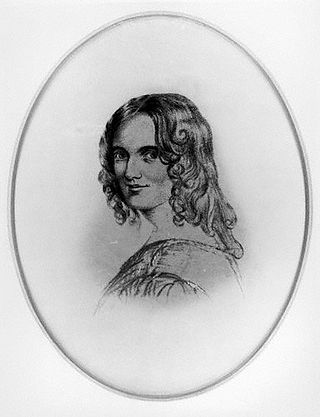
Sarah Fuller Flower Adams was an English poet and hymnwriter. A selection of hymns she wrote, published by William Johnson Fox, included her best-known one, "Nearer, My God, to Thee", reportedly played by the band as the RMS Titanic sank in 1912.

The Dominican Sisters of Hawthorne are a Roman Catholic congregation of religious sisters, who are a part of the Third Order of Saint Dominic. The Congregation was founded on December 8, 1900, by Rose Hawthorne Lathrop, a daughter of the famed novelist Nathaniel Hawthorne. They specialize in caring for those suffering from terminal cancer and have no financial resources.
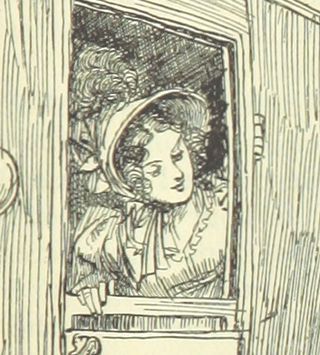
Emma Woodhouse is the 21-year-old eponymous protagonist of Jane Austen's 1815 novel Emma. She is described in the novel's opening sentence as "handsome, clever, and rich, with a comfortable home and a happy disposition... and had lived nearly twenty-one years in the world with very little to distress or vex her." Jane Austen, while writing the novel, called Emma, "a heroine whom no-one but myself will much like."

Our Nig: Sketches from the Life of a Free Black is an autobiographical novel by Harriet E. Wilson. First published in 1859, it was rediscovered in 1981 by Henry Louis Gates Jr. and was subsequently reissued with an introduction by Gates. Our Nig has since been republished in several other editions. It was long considered the first novel published by an African-American woman in North America, though that record is now contested by another manuscript found by Gates, The Bondwoman's Narrative, which may have been written a few years earlier.
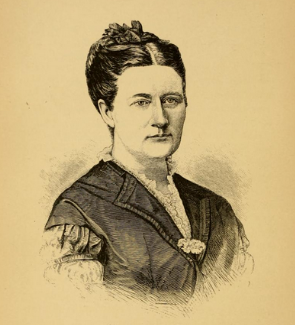
Clara A. Swain was an American physician and Christian missionary of the Methodist Episcopal Church. She has been called the "pioneer woman physician in India," and as well as the "first fully accredited woman physician ever sent out by any missionary society into any part of the Non-Christian world". Her call to service in India fell from a need to have a female physician provide quality medical care to high-caste women, that were religiously secluded to zenana. Supported by the Woman's Foreign Missionary Society of the Methodist Episcopal Church, Swain left the United States in 1869, for Bareilly, India, where she spent the next twenty-seven years of her life treating women and children from illnesses, while simultaneously working to evangelize natives.

Lewis and Harriet Hayden House was the home of African-American abolitionists who had escaped from slavery in Kentucky; it is located in Beacon Hill, Boston. They maintained the home as a stop on the Underground Railroad, and the Haydens were visited by Harriet Beecher Stowe as research for her book, Uncle Tom's Cabin (1852). Lewis Hayden was an important leader in the African-American community of Boston; in addition, he lectured as an abolitionist and was a member of the Boston Vigilance Committee, which resisted the Fugitive Slave Act of 1850.
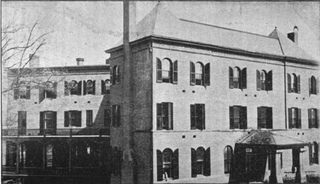
Washington Home and Community Hospices is a US health charity located in Washington, D.C., formerly called Washington Home for Incurables. Founded by Mrs. S. Charles Hill in 1888, it was incorporated March 6, 1889. Its object was to provide a comfortable and permanent home for persons afflicted with any incurable physical disability or disease, for whom no provision exists elsewhere. Previous to this time there was no provision for such cases.
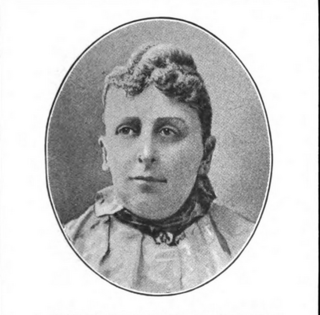
Harriet Abbott Lincoln Coolidge was an American philanthropist, author and reformer. She did much in the way of instructing young mothers in the care and clothing of infants, and furthered the cause to improve the condition of infants in foundling hospitals. She contributed a variety of articles on kindergarten matters to the daily press, and while living in Washington, D.C., she gave a series of "nursery talks" for mothers at her home, where she fitted up a model nursery. Coolidge was the editor of Trained Motherhood; and author of In the Story Land, Kindergarten Stories, Talks to Mothers, The Model Nursery, and What a Young Girl Ought to Know. She was one of the original signers of the Society of the Daughters of the American Revolution, and was an active member of four of the leading charity organizations in Washington. She died in 1902.
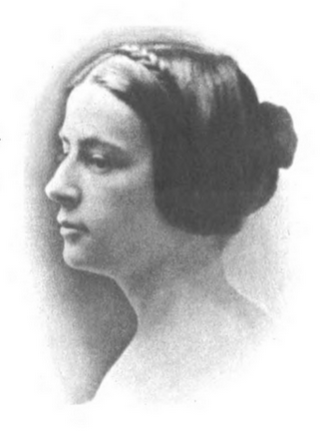
Martha Perry Lowe was an American writer of poetry and prose, as well as a social activist and organizer. She supported women's rights, temperance, education, and Unitarian organizations. Born in New Hampshire in 1829, her parents were General Justus Perry and Hannah Wood. She was a descendant of William Wood, the supposed author of New England's Prospects, who left England and settled in Concord in 1638. At the age of 15, Lowe was sent to Sedgwick's School for Young Ladies. After her graduation, she spent a winter in the West Indies, and the following year was passed in Madrid with her brother, who was a member of the Spanish legation. In 1857, she married the Rev. Charles Lowe who died in 1874, and at the time of his death was a member of the Somerville school committee. In 1871, when the family went to Europe, Lowe corresponded regularly for the Liberal Christian. In Somerville, she was connected with the Unitarian Review. She was the author of several books of prose and poetry; the most noted ones include The Olive and the Pine, Love in Spain, and a Memoir of Charles Lowe. She was interested in many public and private philanthropies, but her chief interests were in the public schools. She was among the first to advocate the teaching of cooking and sewing, and at her suggestion a sum of money was raised for that purpose. She was one of the founders of the Educational Union in Somerville, one of whose duties was a regular visitation of the schools by its members. She was a member of the Society of American Authors of New York, the Authors' Club of Boston, the Woman's Education Association, and the Unitarian Church Temperance Society, as well as an honorary member of the Castilian Club, of the Heptorean Club, of the Teachers' Annuity Guild, honorary president of the Woman Suffrage League, a director of the Massachusetts Suffrage Association, president of the Woman's Alliance of the First Unitarian Church, and a member of the Cambridge Branch of the Indian Association. She died in Massachusetts in 1902.

Henrietta A. Bingham was a 19th-century American writer, editor, and preceptress. She succeeded Phebe Ann Coffin Hanaford as the editor of the Ladies' Repository and the Myrtle, and was the last editor of the Ladies' Repository.
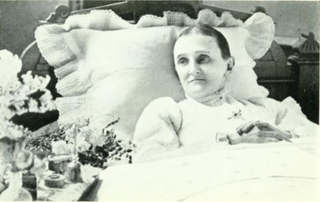
Jennie Casseday was a 19th-century American philanthropist, social reformer, school founder, and letter writer. Born in Louisville, Kentucky, in 1840, her girlhood passed amid the surroundings of a wealthy Christian home. In 1861, she was thrown from a carriage; she survived the resulting spinal injury but was physically disabled, and in pain for the rest of her life. It was her own love of flowers in the sick-room which first suggested the Flower Mission. In 1885, she served as superintendent, Flower-mission Department, of the Shut-in Society. When Frances E. Willard came to Louisville in 1881, Cassedy gained Willard's consent to become superintendent of this work for the Woman's Christian Temperance Union (WCTU). From that time until her death, she directed from her sick-bed world-wide plans for this philanthropy, personally conducting an immense correspondence in its interests. Besides her work in the Flower Mission, Casseday was the founder of the Jennie Casseday Infirmary, and the Louisville Training School for Nurses.
Emily Gillmore Alden was an American author and educator. For forty years, Alden was a member of the faculty of Monticello Seminary, and for nearly fifty years, the poet of the school. Alden wrote the commencement day poems for Monticello every year since she entered the institution. Harriet Newell Haskell : a span of sunshine gold was published in 1908 and Poems by Emily Gillmore Alden was published in 1909.
Alice Blanchard Coleman was an American missionary society leader. She served as president of the Woman's American Baptist Home Mission Society and of the Council of Women for Home Missions (1908-16). Coleman was a trustee of Hartshorn Memorial College, Richmond, Virginia; Spelman Seminary, Atlanta, Georgia; and the New England Baptist Hospital, Boston. Writing as "Mrs. George W. Coleman", she made at least two contributions to periodical literature, "The Women's Congress of Missions", 1915, and "Recent developments in Mormonism", 1918. All of Coleman's life was spent in the old South End of Boston.
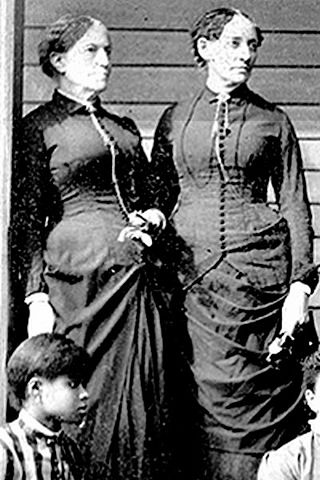
The Woman's American Baptist Home Mission Society was an American Christian women's missionary organization. Harriet E. Giles and Sophia B. Packard co-founded, in 1877, the Woman's American Baptist Home Mission Society, supporting missionary women bringing education to the African-American and Native American communities.
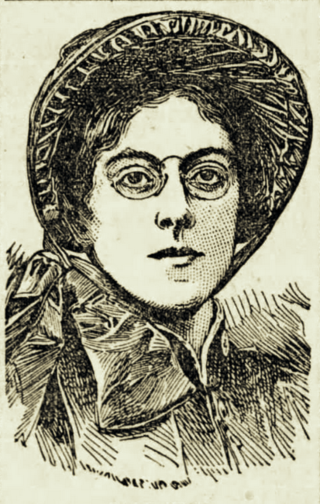
Susie Forrest Swift was an American Salvationist, and later, after converting to Catholicism, a Dominican nun. In both roles, she worked as a magazine editor.

Jennie Hart Sibley (1846–1917) was a prominent figure in the state of Georgia, holding leadership roles within various organizations, particularly in the American temperance movement. She served as the second president of the Georgia State Woman's Christian Temperance Union (W.C.T.U.), succeeding her sister-in-law, Jane E. Sibley. She was also Greene County's president of the Daughters of the Confederacy as well as the inaugural president of the Union Point Garden Club, sometimes referred to as the "The Mother of Georgia garden clubs". Sibley is also remembered for her advocacy in the suffrage movement.
